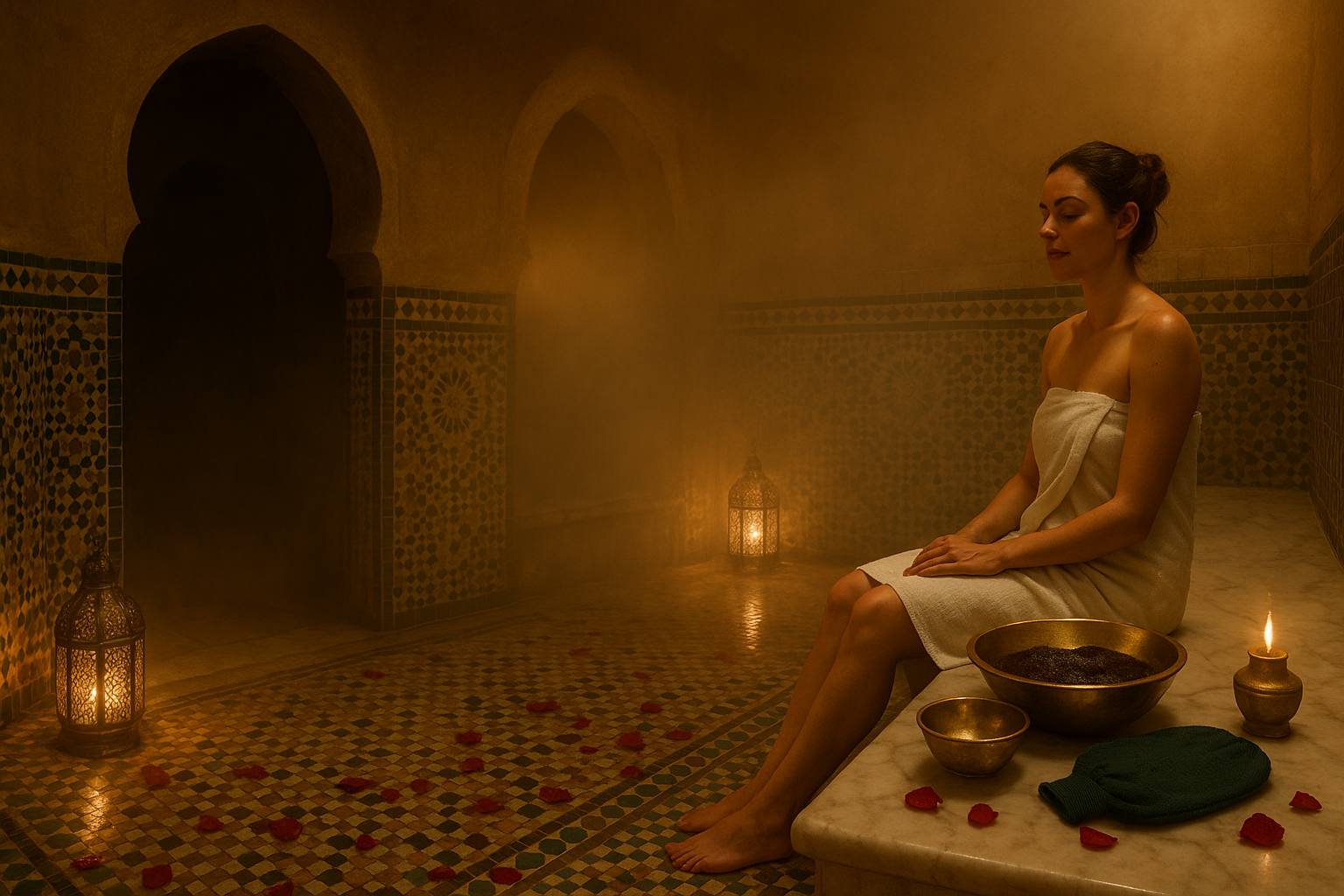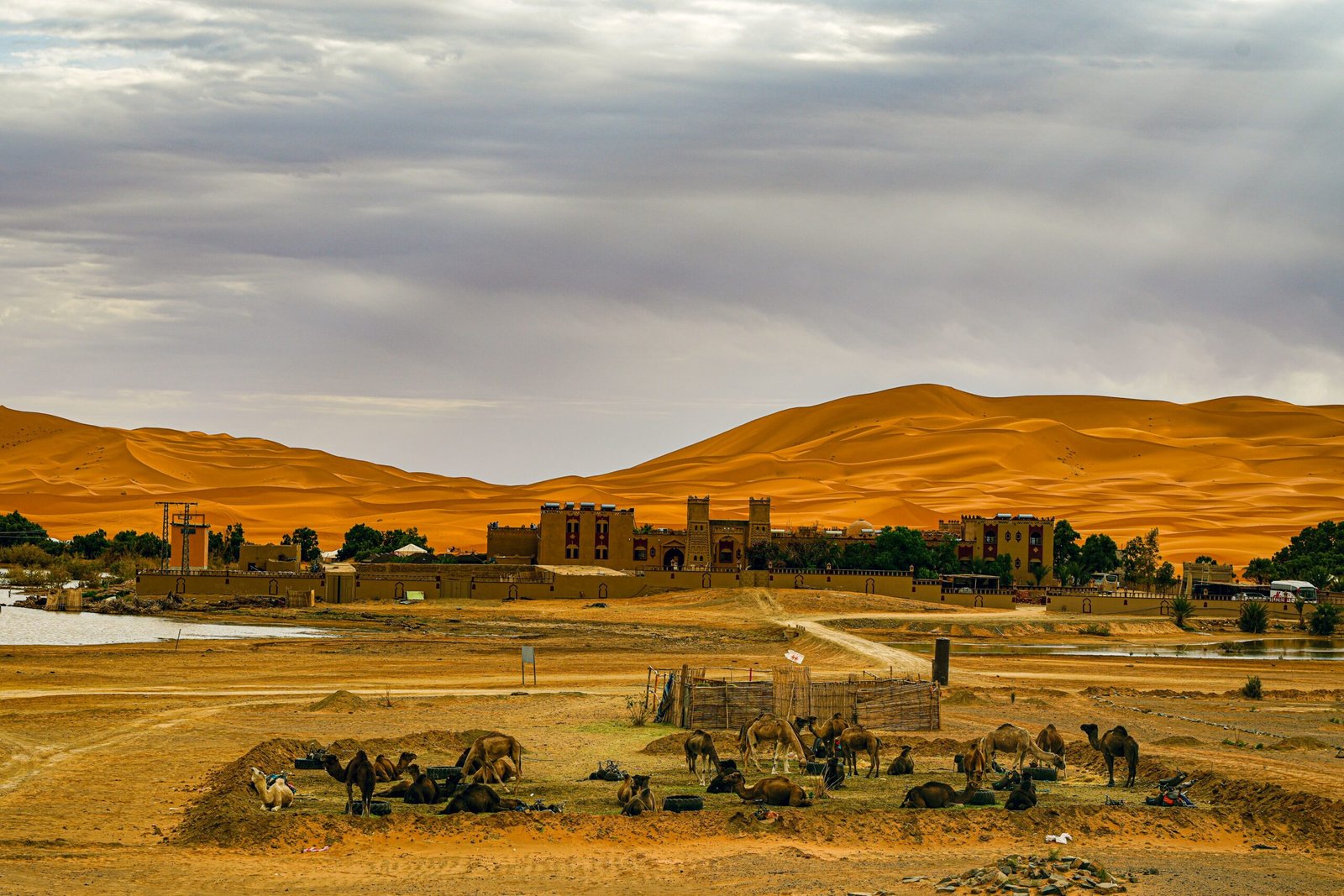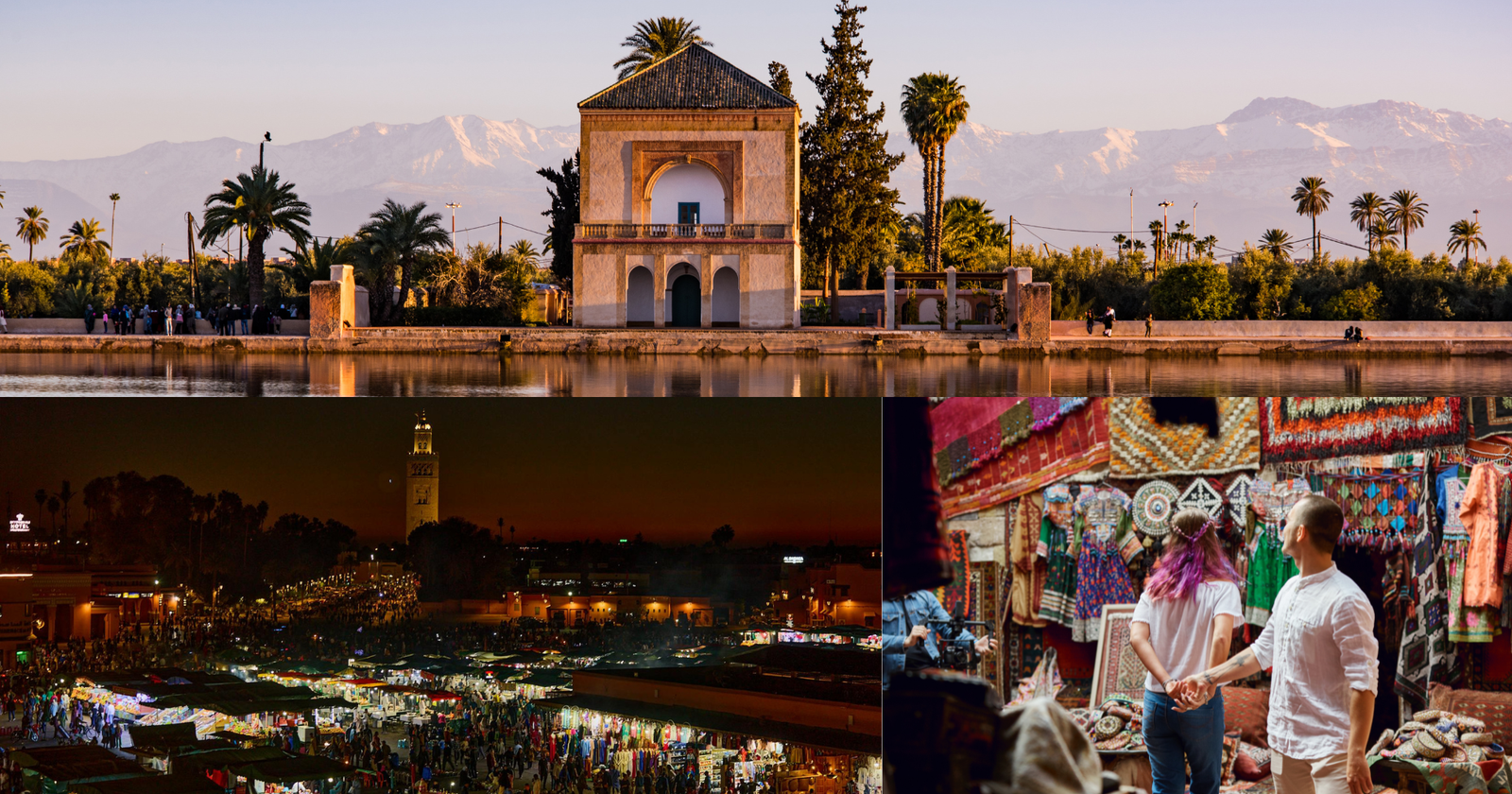Did you know the Hassan Tower in Rabat, Morocco, is a top landmark in the Islamic world?
This incredible minaret shows the skill and dreams of the Almohad dynasty. As you learn about it, you’ll see how it reflects Morocco’s deep Islamic roots.
The Hassan Tower is more than just an old building. It’s a key part of Morocco’s culture, drawing people from everywhere.
Introduction to Hassan Tower and Its Significance
The Hassan Tower has deep roots in the Almohad dynasty. It’s a piece of history waiting to be explored. You’re about to learn about a monument that has become a symbol of Rabat’s identity.
Overview of Hassan Tower
The Hassan Tower was commissioned by the Almohad Caliph Abu Yusuf Yaqub al-Mansur in the late 12th century. It was meant to be the minaret of the world’s largest mosque. The tower’s construction started around 1195 but stopped when the Caliph died in 1199.
Even though it was never finished, the tower has become a key symbol of Rabat. It shows the city’s rich cultural heritage.
Exploring the Hassan Tower, you’ll see its impressive architecture. It combines Islamic and Mediterranean styles. The tower’s design uses local materials and traditional construction techniques. This shows the skill of the craftsmen.
Historical Context of the Site
To truly understand the Hassan Tower, you need to know its history. The tower was part of a mosque complex that was never finished. The site is now a major historical landmark, attracting visitors worldwide.
- The Hassan Tower shows the ambitions of the Almohad Caliphate during its reign.
- It stands as a testament to the architectural innovations of the time.
- The tower’s unfinished state reminds us of the historical events that shaped its destiny.
As you explore the Hassan Tower, you’ll learn more about its history. You’ll see its importance in Islamic architecture and Moroccan heritage.
Architectural Features of Hassan Tower
As you get close to the Hassan Tower, its red sandstone façade catches your eye. This iconic minaret is a work of Almohad architecture. It combines traditional Moroccan and Islamic design.
Unique Design Elements
The Hassan Tower is famous for its intricate geometric patterns and horseshoe arches. These are hallmarks of Almohad architecture. The tower sits on a square base, typical of Moroccan minarets, making it visually striking and historically important.
The tower’s red sandstone construction gives it a unique look. It also highlights its connection to the area’s rich architectural history. The detailed decorations show the skill of the time.
Use of Materials and Techniques
The Hassan Tower’s construction shows the advanced skills of the Almohad era. The choice of red sandstone was practical and added to the tower’s beauty.
| Material/Technique | Description | Significance |
|---|---|---|
| Red Sandstone | Primary construction material | Gives the tower its distinctive color and connects it to regional architectural traditions |
| Geometric Patterns | Intricate designs adorning the tower | Characteristic of Almohad and Islamic architecture, adding to the tower’s beauty and historical significance |
| Horseshoe Arches | Architectural feature of the tower | Typical of Almohad architecture, contributing to the tower’s unique design |
The Hassan Tower’s architecture shows the Almohad architects’ skill and vision. It also represents the culture and religion of that time. Exploring the tower, you see how Islamic architecture combines function and beauty.
The Historical Background of Hassan Tower
The Hassan Tower’s history is closely tied to the Almohad dynasty’s mark on Moroccan architecture. As you learn about this famous landmark, you’ll see its big role in Rabat’s architecture.
The Almohad Dynasty and Its Influence
The Almohad dynasty was famous for its buildings. The Hassan Tower was a huge project that showed the dynasty’s power and dreams. The tower’s design and construction were influenced by the Almohad’s unique architectural style, mixing Islamic and Berber traditions.
The Almohad caliphs were known for their big building projects. The Hassan Tower was one of the biggest. Even though it was never finished, it shows the dynasty’s vision and skill.
Construction Timeline and Challenges
The Hassan Tower started building in the late 12th century under Caliph Ya’qub al-Mansur. The goal was to build one of the biggest mosques in the Islamic world. But, the tower was never finished because of challenges like the caliph’s death and technical problems.
The timeline and challenges faced during building are key to understanding the tower’s story. Here’s a quick summary:
| Year | Event | Significance |
|---|---|---|
| 1190s | Construction begins | Start of the ambitious project under Caliph Ya’qub al-Mansur |
| 1199 | Death of Caliph Ya’qub al-Mansur | Possible halt in construction due to change in leadership |
| Early 13th century | Construction halts | The tower remains unfinished, a testament to the challenges faced |
Knowing the historical context and the challenges during the Hassan Tower’s construction gives us a deeper understanding of its importance and legacy.
Exploring the Location of Hassan Tower
In Rabat, Morocco’s lively capital, you’ll find the Hassan Tower. It stands out against the Atlantic Ocean. This amazing structure shows the city’s rich history and is a key landmark.
Geographic Setting in Rabat
The Hassan Tower is in a key spot, making it a highlight of Rabat’s buildings. Rabat’s status as a capital makes the tower even more important. It’s near the Atlantic Ocean, giving visitors breathtaking views of the coast.
The tower is in a historic area, surrounded by other important sites. This makes it even more beautiful and significant.
| Landmark | Location | Significance |
|---|---|---|
| Hassan Tower | Rabat, Morocco | Iconic minaret and symbol of Islamic architecture |
| Mausoleum of Mohammed V | Adjacent to Hassan Tower | Final resting place of Moroccan royalty |
| Kasbah of the Udayas | Nearby historic fortified area | Historic fortifications and beautiful gardens |
Accessibility for Visitors
Visitors can get to the Hassan Tower easily. Taxis and public buses are good ways to get there. The tower is also walkable from many parts of the city, letting visitors see more of the area.
Knowing how to get there helps plan your visit better. The Hassan Tower’s location makes it a top spot to see in Rabat.
Cultural Importance of Hassan Tower
The Hassan Tower holds a special place in Moroccan culture. It shows the beauty of Islamic architecture. When you visit, you see more than just a building. You experience Morocco’s deep cultural roots.
Symbolism in Islamic Architecture
The Hassan Tower is filled with architectural details that show Islamic design. Arches, domes, and minarets are not just pretty. They hold deep meanings. For example, the minaret calls people to prayer, showing Islam’s presence.
The tower’s design shows the Almohad dynasty’s skill in geometric patterns and calligraphy. This highlights Islamic architecture’s importance.
Role in Moroccan Heritage
The Hassan Tower is key to Moroccan heritage. It stands as a cultural symbol, connecting to the nation’s history and identity. Moroccans are proud of it, seeing it as a part of their rich heritage.
- It marks Rabat’s role as a center of Islamic learning and culture.
- The tower showcases Morocco’s architectural achievements during the Almohad era.
- It remains a central spot for cultural and religious events.
Exploring the Hassan Tower is more than seeing a historical site. It’s a way to connect with Moroccan culture and heritage.
Visiting Hassan Tower
Getting ready to see Hassan Tower? Knowing the best times and what to expect will make your visit better. It’s in Rabat’s heart, a key spot that draws people from all over.
Best Times to Visit
The spring (March to May) and autumn (September to November) are the best times. The weather is nice and not too hot or cold. It’s perfect for exploring and enjoying the views.
- Spring: See the gardens in bloom and enjoy the weather.
- Autumn: Enjoy the calm with fewer people around.
Entry Fees and Guided Tours
You can visit the Hassan Tower site, but the tower itself is closed inside. The Hassan Tower entrance fee is low, making it easy for everyone to visit.
Guided tours offer great insights into Hassan Tower’s history and importance. They’re a must to truly understand the site’s cultural and architectural value.
| Tour Type | Duration | Cost |
|---|---|---|
| Guided Tour | 1 hour | $10 |
| Audio Guide | Self-paced | $5 |
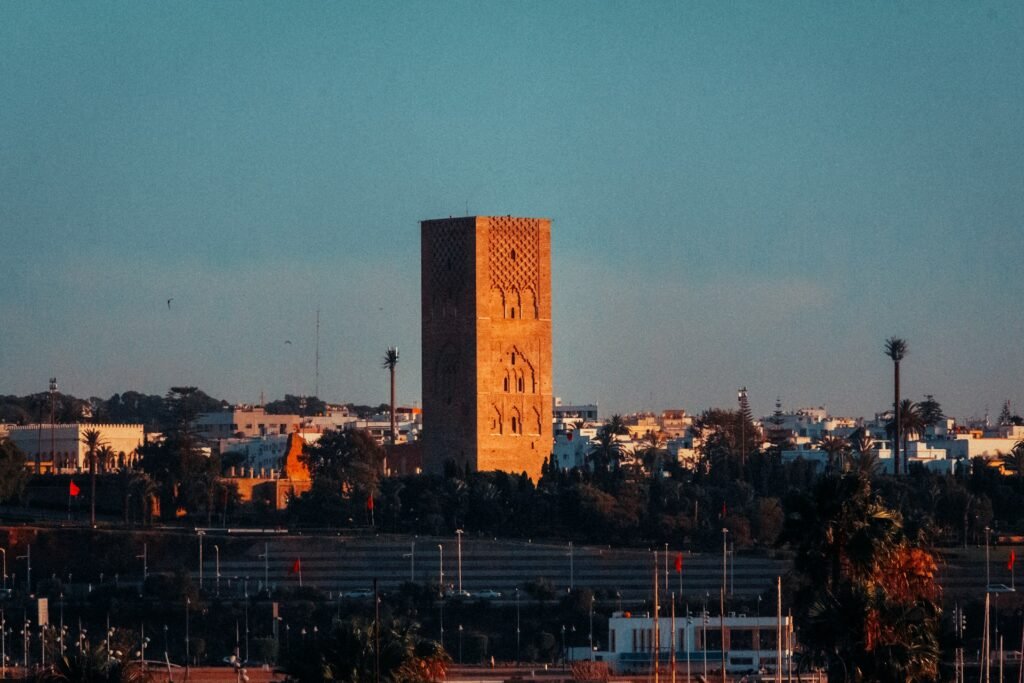
Nearby Attractions to Hassan Tower
Rabat’s Hassan Tower is part of a larger historical landscape. It includes several nearby attractions. Exploring the area reveals a wealth of cultural and historical significance.
Mausoleum of Mohammed V
The Mausoleum of Mohammed V is a significant site near Hassan Tower. It showcases modern Moroccan architecture. Mohammed V, the grandfather of the current King of Morocco, is buried here.
Visitors can see the beautiful tile work and carved stone. The mausoleum’s design blends traditional and modern styles. It’s a cultural landmark that offers insights into Morocco’s past and present.
The Kasbah of the Udayas
The Kasbah of the Udayas is another nearby attraction. It’s a historic fortified city from the 12th century. The Kasbah has narrow streets, charming gardens, and views of the Bou Regreg river.
Visitors can explore the kasbah’s alleys, visit the Museum of Moroccan Arts, and enjoy the Andalusian Gardens. The Kasbah offers a unique glimpse into Rabat’s past. It shows the mix of Arab, Berber, and European influences.
When visiting Hassan Tower, explore these nearby attractions. They offer a deeper understanding of Rabat’s history and culture. The area is a treasure trove of Moroccan heritage, perfect for capturing Hassan Tower photos and learning Hassan Tower facts.
Local Legends and Stories Surrounding Hassan Tower
The Hassan Tower in Rabat is known for its myths, folklore, and historical stories. It’s more than just a beautiful building. Its history is rich and fascinating.
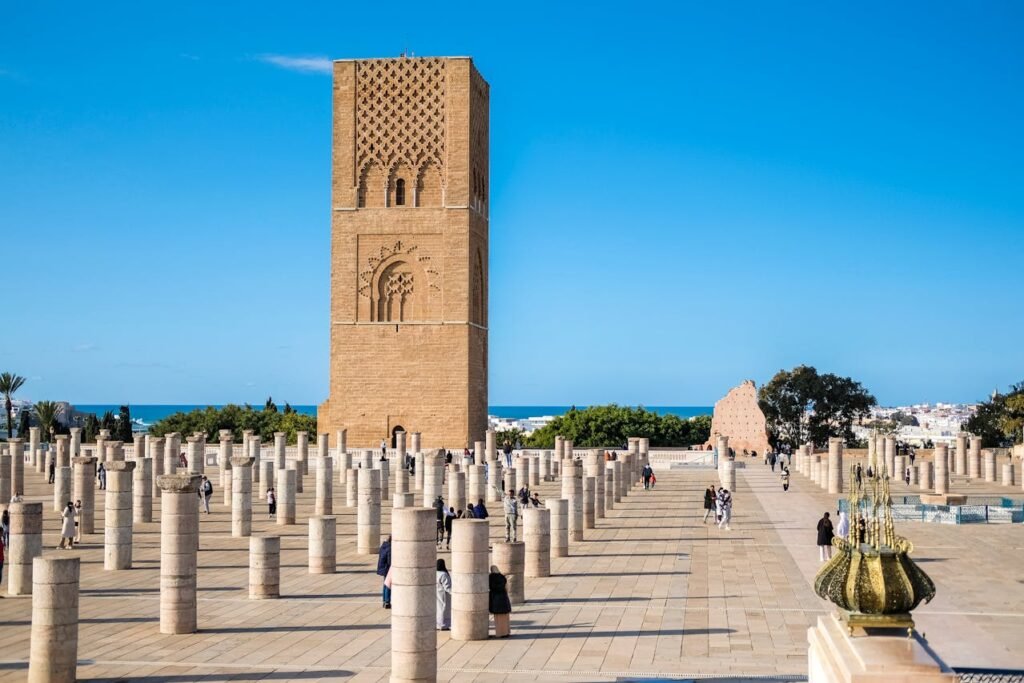
Myths and Folklore
For centuries, the Hassan Tower has been part of local legends. One legend says a curse stopped its construction, leaving it unfinished. This story captures our imagination and shows the tower’s importance. It makes visiting the tower a unique experience.
Many myths surround the tower’s design and the area around it. Some believe its layout and direction have deep meanings. These tales connect the Hassan Tower to Morocco’s rich culture.
Historical Figures Associated with the Tower
The Hassan Tower is linked to Almohad Caliph Abu Yusuf Yaqub al-Mansur. He started building it in the 12th century. Al-Mansur wanted it to be the tallest minaret for a grand mosque. Though it was never finished, it shows al-Mansur’s architectural dream.
Visiting the Hassan Tower lets you see the life of al-Mansur and the Almohad dynasty. Its historical value and connection to a key figure in Moroccan history make it a must-see.
Conservation Efforts and Preservation
Keeping the Hassan Tower safe is key, and many efforts are underway. This historic site in Rabat is vital for Morocco’s culture and history. It’s a treasure that needs our care.
The Hassan Tower, in Rabat’s heart, has seen many restoration projects. These projects aim to keep it standing strong. You can learn more about these efforts and their impact.
Restoration Projects Over the Years
Many restoration projects have focused on the Hassan Tower. They’ve tackled damage from nature and tourism. Restoration work has fixed stones, brought back the minaret’s look, and improved visitor areas.
In the early 2000s, a big project stabilized the tower’s base and fixed cracks. This was key to stopping its decline and keeping it safe for the future.
Challenges in Maintaining the Site
Despite restoration successes, the Hassan Tower faces ongoing issues. Environmental degradation and tourism are big worries. The tower faces erosion and damage from weather and visitors.
Tourism is good for the local economy but also risks the site. Managing tourism well is essential to protect the tower.
| Challenge | Description | Impact |
|---|---|---|
| Environmental Degradation | Exposure to rain, wind, and temperature fluctuations | Erosion and damage to stone |
| Tourism Impact | Large number of visitors | Wear and tear on the structure |
To tackle these issues, constant conservation work is needed. This includes regular upkeep, watching the site, and finding ways to lessen tourism and environmental harm.
Events and Activities at Hassan Tower
Exploring the Hassan Tower reveals a lively cultural scene all year round. It’s more than just a historical site; it’s a key part of Rabat’s cultural scene. It hosts many events and festivals that highlight Moroccan heritage and Islamic architecture.
Cultural Festivals Held Nearby
The Hassan Tower is surrounded by cultural festivals all year. These festivals feature traditional Moroccan music and dance, and religious celebrations. They show the tower’s importance in Islamic culture. Visitors can soak in the lively atmosphere and learn about Morocco’s rich culture.
Educational Programs Available
The Hassan Tower also offers educational programs. These programs teach about its history and architecture. They include guided tours, workshops, and lectures on the tower’s role in Moroccan history and Islamic architecture.
Photography enthusiasts love the Hassan Tower. Many take Hassan Tower photos to capture its beauty and historical value. Its unique design and stunning location make it a photographer’s dream.
Conclusion: The Enduring Legacy of Hassan Tower
The Hassan Tower in Rabat is a symbol of Morocco’s rich culture and skill in building. When you visit, you step into a world where Islamic design and Almohad history meet.
Preserving the Past for the Future
Work is ongoing to keep the Hassan Tower safe for the next generations. It’s a key part of Morocco’s story, drawing people from everywhere.
Experience Hassan Tower Rabat
Seeing the Hassan Tower is a chance to see Islamic architecture up close. Walking around, you’ll see the fine details and history that make it important. Make plans to see Hassan Tower Rabat and learn about its lasting impact.



